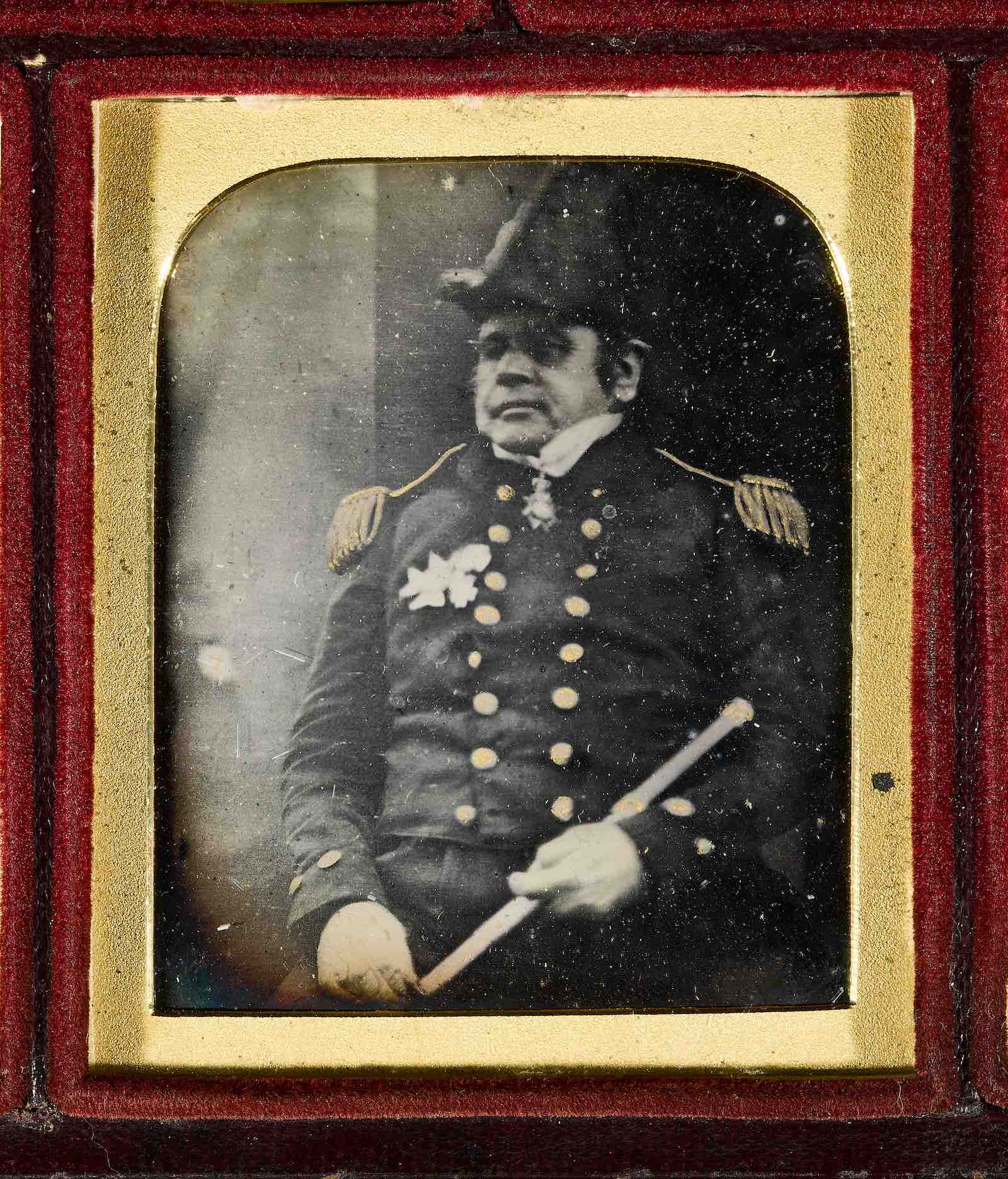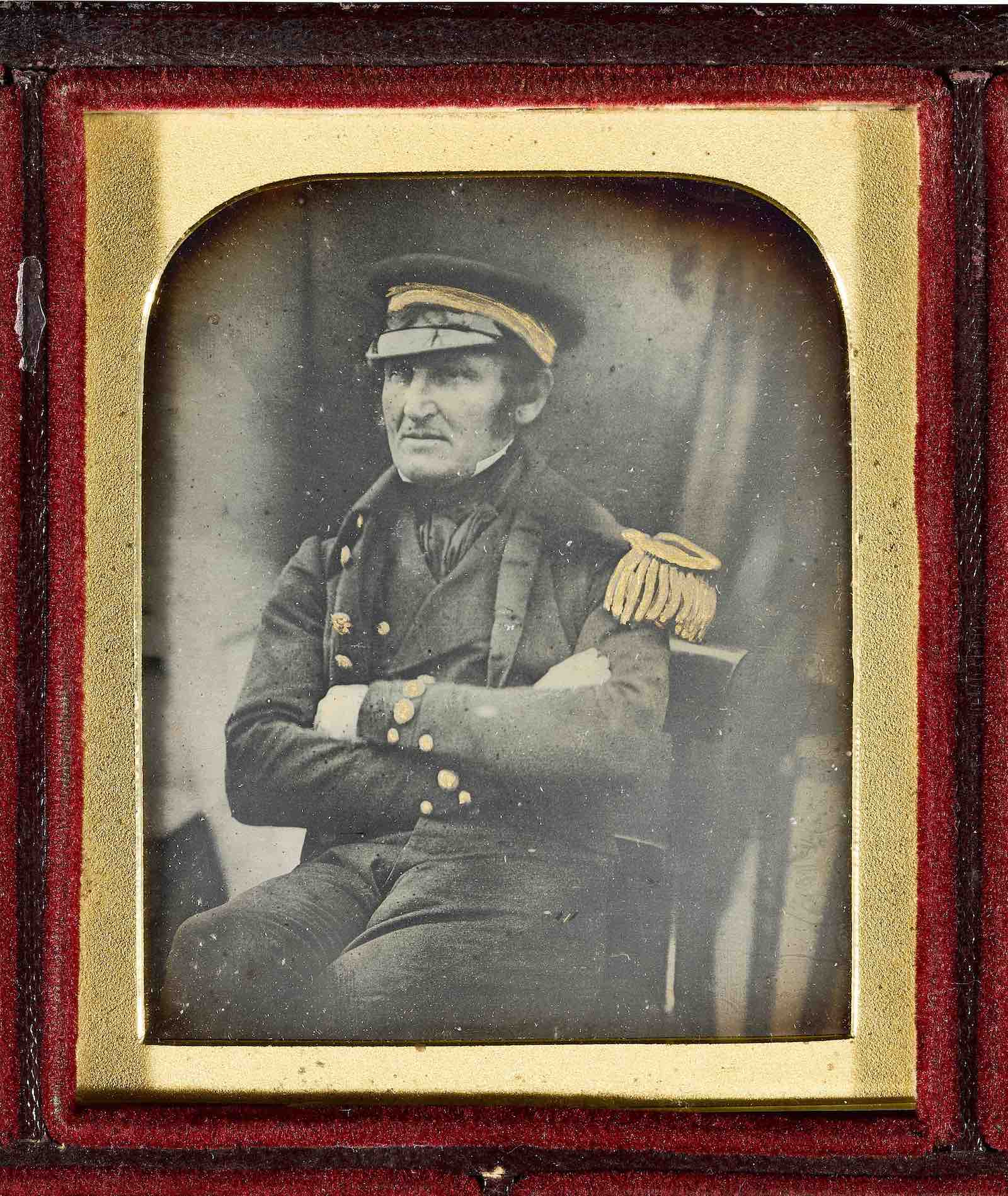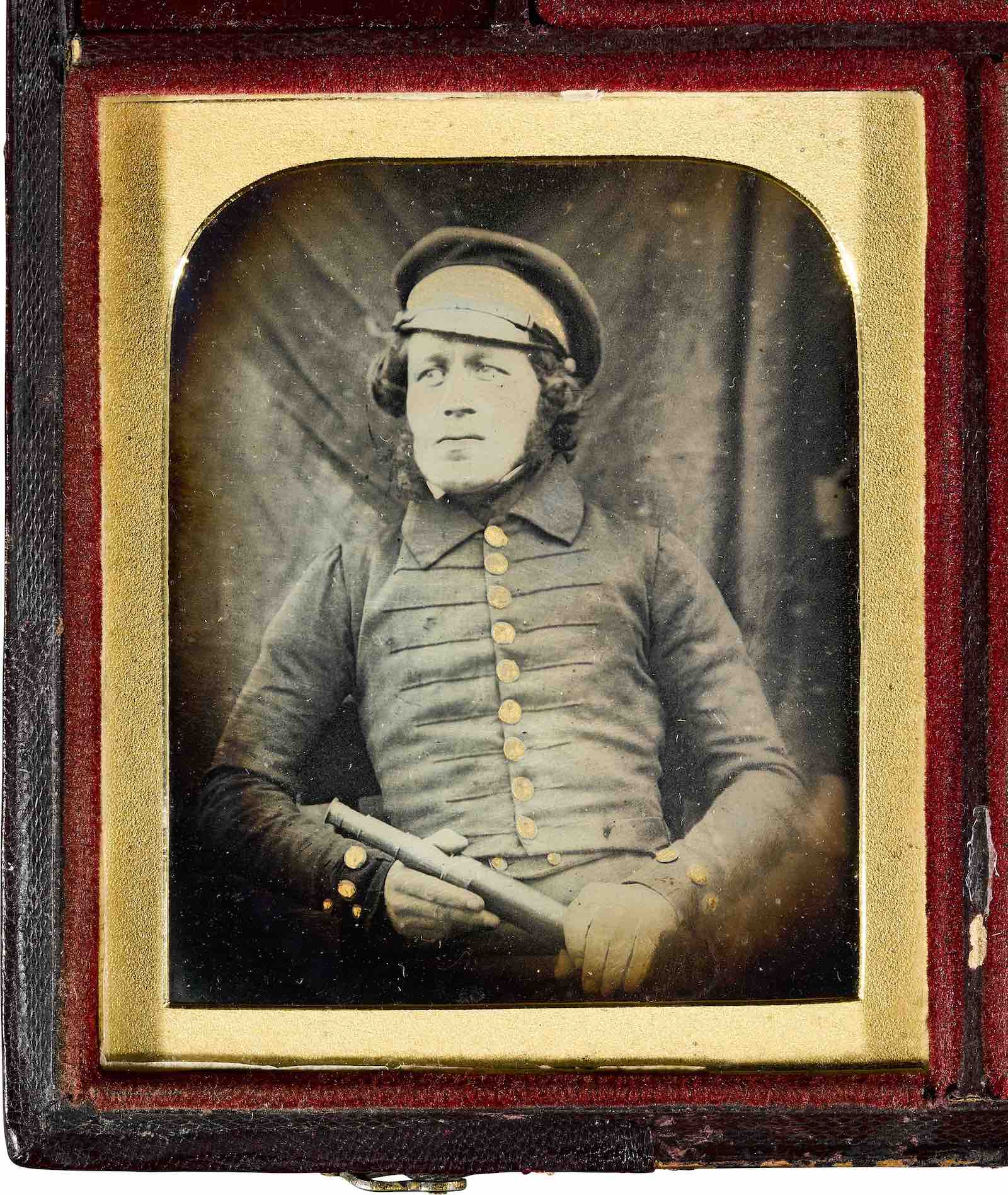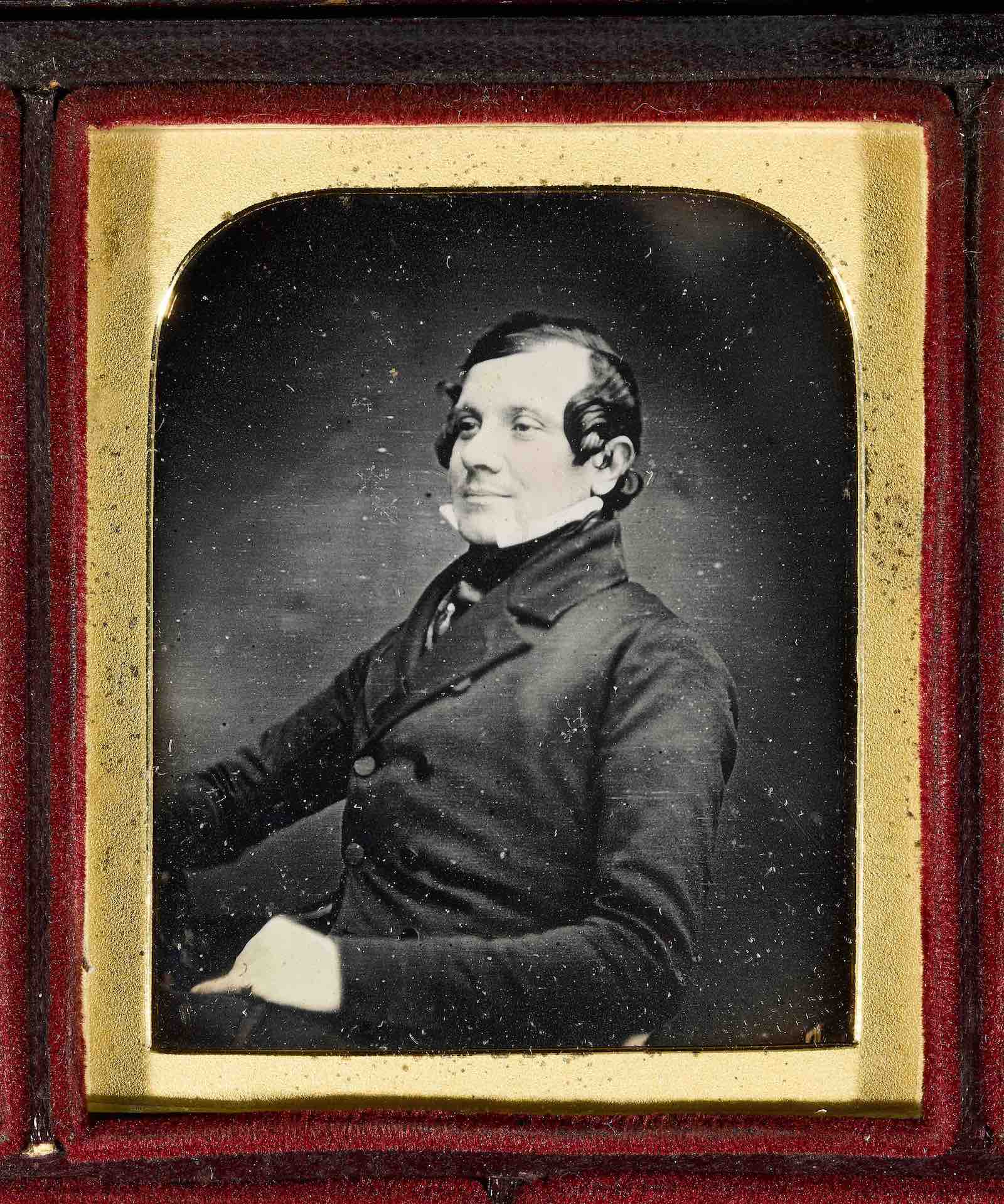The only other known set of the daguerreotypes is in the collection of the Scott Polar Research Institute (SPRI). The set at SPRI includes 12 portraits, lacking the images of Robert Sargent and Francis Crozier, both found in the present lot.
“These images are the primary lens through which the public saw Franklin and his men," said Dr. David Goldthorpe, Head of Sotheby’s Europe Books & Manuscripts department, "and thus a landmark artefact of an expedition which has captured the public imagination for nearly two centuries, whether through the numerous Victorian rescue expeditions to the recent discovery of the wrecks of the Erebus and Terror, or through the prolific literary responses the Franklin expedition has inspired. But apart from its broader significance within the histories of polar exploration and of early photography, it is worth remembering the private dimension that this set of images holds. Franklin’s family must have known that the safe return of the 59-year old Sir John was no certainty. It is when viewed as a private keepsake, rather than as a public record, that the human stories beneath these images truly come alive.”
Emily Bierman, Global Head of Sotheby’s Photographs department, added: “Each plate is stunningly crisp and conveys the high level of detail the best daguerreotypes are known for. Their re-emergence after 178 years is a truly significant moment for the market and our understanding of the medium.”
An invitation as expedition commander was extended to a 59-year-old Franklin alongside James Fitzjames as commander of HMS Erebus and Captain Francis Crozier as commander of HMS Terror. All three men feature in the daguerreotype set and are shown proudly posing in their uniforms alongside 11 senior members of the crew of HMS Erebus. Supplied with three years’ worth of preserved food supplies, The Franklin Expedition set sail from Greenhithe, England, on May 19 1845, with a crew of 24 officers and 110 men. After two years with no word from the 134 men, Franklin's wife pressed the Admiralty to send a search party. The crew’s ample supplies meant the Admiralty waited another year before launching a search and offered a reward equal to £2 million pounds today. Franklin’s name and the money led to many failed searches, with more men and ships lost than in the expedition itself.
In 1854, the Scottish explorer John Rae determined the fate of the expedition by talking to Inuit hunters during his survey of the Boothia Peninsula for the Hudson’s Bay Company. Both ships had become icebound with the men dying from the cold and in some cases resorting to cannibalism. The news was leaked to the press and caused widespread anger in Victorian society. Lady Franklin's determined efforts to find her husband led to a further 25 searches over the next four decades, which although did not add further information in locating her husband, contributed hugely to the mapping of the Arctic. In 2014 HMS Erebus was discovered by Parks Canada in collaboration with Inuit communities, followed by the discovery of HMS Terror in 2016.
Starring in the sale alongside the Franklin daguerreotypes is a collection of maps, drawings and watercolours belonging to the descendants of the scientist Sir Joseph Dalton Hooker who had been on a previous voyage of HMS Erebus to the Southern Ocean and Antarctica in 1839-43.
Final Photographs of Doomed Franklin Expedition to Auction
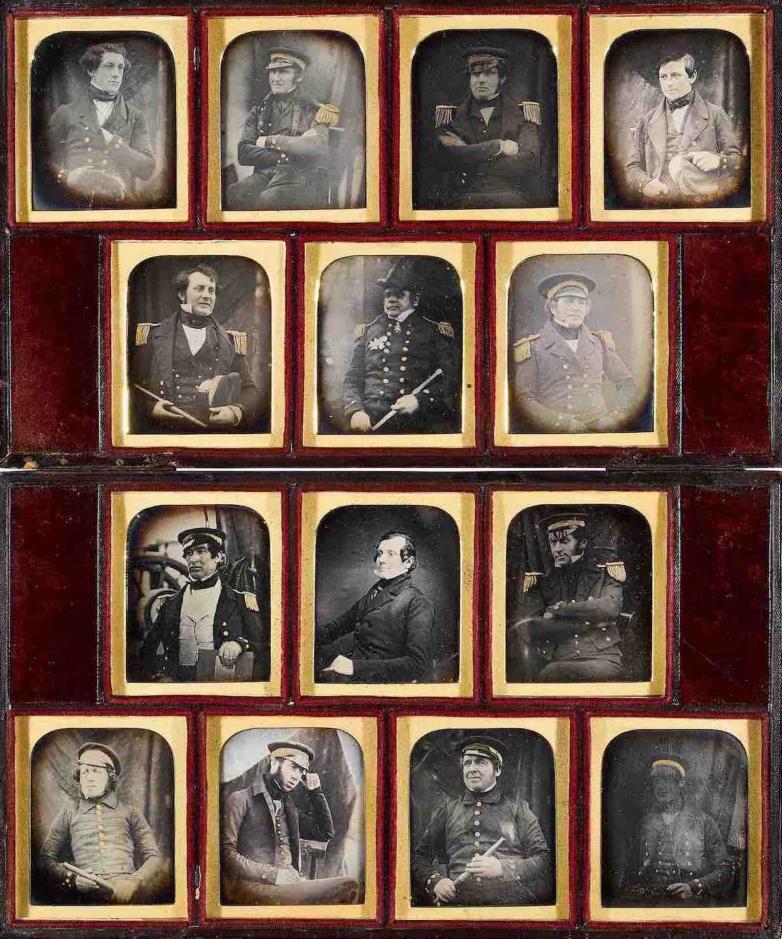
Set of daguerreotypes of Franklin's lost expedition to the Northwest passage
A set of photographs of Sir John Franklin and his fellow senior officers of the ill-fated HMS Erebus and Terror – believed lost until now – will be offered in Sotheby’s Travel, Atlases, Maps & Photographs Sale in London on September 21.
One of the most significant artifacts for the history of photography and polar exploration rediscovered in recent times, the photographs are emerging from the direct descendants of the extraordinary British Royal Navy officer and Arctic explorer and are estimated to fetch between £150,000 – 200,000.
Originally commissioned by Lady Jane Franklin, the images were taken by Richard Beard studio of Regent Street in London on May 15-17 1845 en plein air aboard HMS Erebus just three days before it was to set sail, never to return. These early daguerreotypes are the last photographs of 14 members of the expedition sent to explore 500km of Arctic coastline to complete the charting of the Northwest Passage.
The 14 sixth-plate daguerreotypes (70 x 83mm.) are each hand-tinted coloured with shell gold applied to the buttons, hat bands and epaulettes of the officers' jackets, each inscribed on the verso (in ink or etched with a stylus, denoting name and sometimes rank of sitter, name of ship on which they served, and date), and housed in a contemporary partitioned, book-form morocco case (203 x 339 x 22mm).




